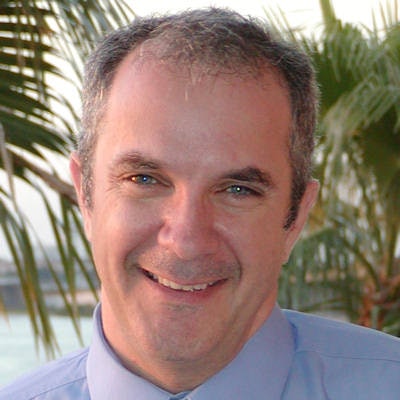
Your hygiene department can make or break your practice, yet most hygiene departments underproduce. Here is a list of the top five concerns I've heard and questions I've been asked over the years.
1. What percentage of production should come from hygiene?
 Kevin Tighe is a managing partner at Cambridge Dental Consultants.
Kevin Tighe is a managing partner at Cambridge Dental Consultants.The "industry standard" is 30% to 35%; however, the percentage of a practice's production that comes from hygiene will vary, as dentists have different treatment protocols, and their definition of "ideal dentistry" and "ideal hygiene care" will vary. As an example, I have one client who produces $5,000 a day and whose hygienist produces $1,200 a day. Another client produces $2,200 a day and has a hygienist who produces around $1,000 a day.
So what is a good amount of production for a hygienist? The answer should be based on what a practice generally delivers and its fee schedule. For example, offices that do scaling and root planing (SRP) on a more frequent basis will have higher hygiene production averages. This, of course, depends on the doctor's viewpoint on what the hygiene department should deliver. So depending on the type of hygiene a practice delivers, I look for what a practice can optimally do based on the type of services it offers.
2. What counts toward hygiene production?
Everything billed in hygiene except, for the most part, the exam.
There is often an "exam debate" as to what counts toward hygiene production. This is because of codes that only allow the exam to be submitted if the dentist does the examination/diagnosis unless state law, such as in Colorado, says otherwise. This really only matters if you pay or pay a bonus based on production. As long as the benchmark for the compensation/bonus is consistent and fair, it doesn't much matter, except it would be nice if hygienists were acknowledged for what they actually produce.
3. What should open hours be?
“Are you adding new hygiene days to your schedule?”
Open hours in hygiene are a chief concern. Let's do some basic math: Say you're getting 30 new dental patients a month. That's 360 new dental patients in a year, which means a possible 720 hygiene appointments.
Are you adding new hygiene days to your schedule? If not then there are big, gaping holes in your recare system that a city bus could fall through.
4. Salary or commission?
Base pay plus commission seems to be the best and most popular system. This protects the hygienist if the front desk drops the ball on the schedule but also gives the hygienist a reason to go the extra mile. Commission kicks in when production exceeds three times base pay. Also if the day does fall apart, or there's an open hour, the hygienist on base pay can be put to work calling overdue patients or handling other necessary tasks. However, doing so won't fly when a hygienist is paid on commission only.
How a three-times bonus system is worked out:
- Calculate the daily average production for the hygienist over the past three months (or longer).
- The minimum calculation is three times the pay. Example: Daily pay is $250 x 3 = $750 = Minimum daily baseline.
- At the end of the month, multiply days worked by the minimum daily baseline. Example: 16 days x $750 = $12,000 = Minimum monthly baseline.
- Assuming production is higher than the minimum monthly baseline, there will be a bonus. Subtract baseline from total production for the month. A quick example would be if the production for a month was $14,000 and the baseline was $12,000, then there's a $2,000 difference.
- Multiply the difference by 30% (adjust up or down as you see fit) to arrive at the actual bonus for the month. Using the example above, $2,000 difference x 30% = $600 bonus.
5. Which codes?
Periodontal maintenance (code D4910), of course, follows SRPs. It is not preventive care but aftercare. However, sometimes patients are billed for a prophy (code D1110) when in fact what they received was a D4910 or some other aftercare treatment. If this is happening in your practice, there is likely a significant loss of production.
Sometimes this occurs as that's the way it's always been done in a practice, or because the hygienist or front-desk person does not know how to comfortably explain the differences in the treatments to a patient. The team member opts for the path of least resistance so as not to upset or lose the patient.
For this reason, it is vital that your hygienist and front desk team be able to comfortably educate patients on the necessity of regular periodontal maintenance visits and how that is different from a prophy. This is done using effective case presentation techniques. Start by role-playing with your hygienists to see how well they can educate patients on the differences. It can be a real eye opener.
Keep track of your hygiene numbers, and using incentives and proper coding will help achieve the mission of efficiently delivering the best possible hygiene care to all your patients.
Kevin Tighe is a managing partner at Cambridge Dental Consultants. He can be reached at [email protected].
Disclaimer: The comments in this article are not meant to be taken as financial advice.
The comments and observations expressed herein do not necessarily reflect the opinions of DrBicuspid.com, nor should they be construed as an endorsement or admonishment of any particular idea, vendor, or organization.



















